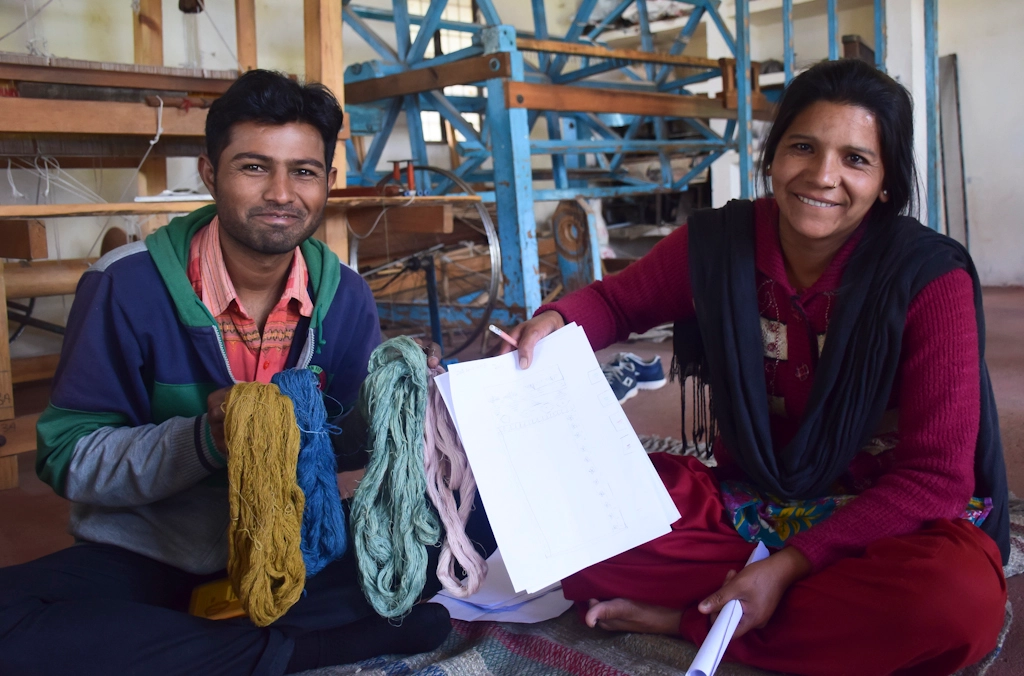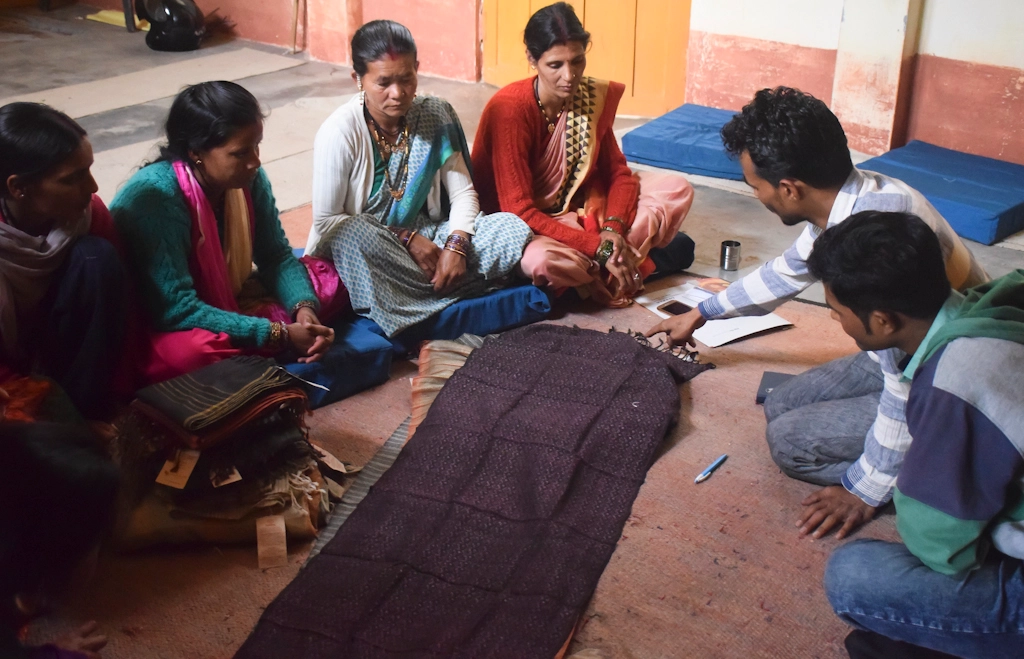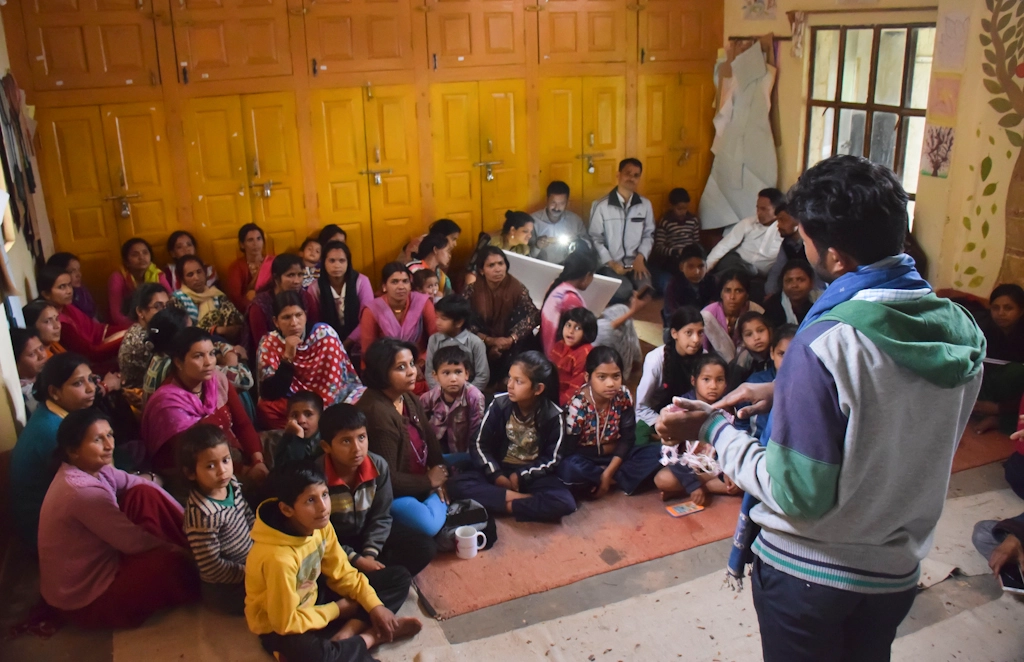Barefoot Education
 In April, Somaiya Kala Vidya began an Outreach project with Avani Kumaon. Avani, a nearly self-sufficient voluntary organization, is situated deep in the Kumaon Hills. The nearest village is Tripura Devi. A 7-hour arduously winding road journey is inevitable, whether you take the train to Kathgodham or the flight to Pantnagar.
In April, Somaiya Kala Vidya began an Outreach project with Avani Kumaon. Avani, a nearly self-sufficient voluntary organization, is situated deep in the Kumaon Hills. The nearest village is Tripura Devi. A 7-hour arduously winding road journey is inevitable, whether you take the train to Kathgodham or the flight to Pantnagar.
The region, 150 km from the Nepal border, is cool and scenic, with forests and views of the Himalayas. But its isolation makes it difficult to earn a livelihood. Typical villages are small. Hamlets have 30-50 families. Revenue villages have up to 200 families. Traditionally, small plots of subsistence farming were enough for families. But as families grew, the land was further divided. Availability of facilities such as phones, cars and computers has increased people’s demand for a cash economy. So nearly all of the young men of Kumaon migrate to cities to earn for their families. Those who remain in the hills work in tourism or small businesses. The villages are managed by women, who do the farm work, housework and child rearing. Despite heavy demands on their time, they would also like to earn money.
Rashmi and Rajnish, the founders of Avani, are from Delhi. They decided to work in Kumaon, to make a contribution to help stabilize the communities. They work on environmental/ ecological issues, community management, and income generation. They promote solar energy, and Rajnish has invented a pine needle gassifier, to generate energy and lessen the danger of forest fires caused by combustion of the pine needles. Rashmi began a craft project that is now largely EarthCraft, a producer company.
EarthCraft’s weaving is primarily an income generation project. The local weaving traditions are very basic and not valued. Avani did initially try to work with two traditions, a semi felted blanket, Thulma, and a looped and cut pile rug, Chutka– with little success. Procuring good quality local materials is also a challenge.
So Avani bypassed the craft market, and turned to the design market. EarthCraft weaves stoles, shawls and fabrics in local and Merino wool, wild silks and now some linen and cotton, with a focus on natural dyes. They try to procure locally. They have encouraged 250 local farmers to grow indigo, and are trying to grow a linen that will survive in the hills. They have invested in professional equipment for processing natural dyes, which they sell. Rashmi feels that the potential for natural dyes is good. So Avani has focused on producing good quality, easy to use dyestuffs.
Avani and EarthCraft’s work is professional, despite contending with great distances that must be covered by foot. The organization has collected an impressive number of awards. Despite its daunting isolation, Avani regularly attracts interns from Indian design and management schools and from institutes all over the world.
However, even with their focus on self-sufficiency, Avani routinely engages design students, rather than artisans, to develop new fabrics and products.
One major challenge that EarthCraft faces is the constant attrition of weavers. Rashmi attributes this to the winds of change. With exposure, she says, aspirations change. When artisans get access to information, they leave craft. She sees this as part of the skill upgradation process. Construction workers become weavers, and weavers become supervisors or office employees. “Where skill has been upgraded it has value,” she says. There is also attrition when young women marry and move away or become busy with new households.
We felt that Avani and EarthCraft have not recognized the potential of artisans doing more than skilled work, or that recognition and satisfaction in weaving might make it more valuable, curbing attrition of weavers.
Because of the shared philosophy of self-sufficiency and sustainability, and strong existing infrastructure, and because our program addresses the issue of attrition of artisans, we thought Avani would be a good partner in a program of design education for artisans, despite a weak cultural heritage connection.
Avani agreed.
From 7 to 19 April, 2018 our team of Pachanbhai and Rajeshbhai, weaver designers who have graduated from the Somiaya Kala Vidya program, and Lokeshbhai, senior Visiting Faculty, conducted the first workshop for our project, on the Avani campus.
“They have a different style of weaving than we do,” Pachanbhai observed. The patterning they weave comes from drafting. He and Rajeshbhai were also intrigued that the weavers seemed to have forgotten how to join new warps.
The first thing they did was find out about tradition. The team went with their Avani weaver partners to villages and asked questions. Pachanbhai liked this part a lot. He enjoyed talking to the women elders- especially since the weaver partners did not speak. Once the ice was broken, they learned that the women had previously had bad experiences with teachers from outside. The teachers yelled at us, they said. So when they heard the SKV team was coming, they were afraid.
“We had to find out their history,” Rajeshbhai related. They learned that the Bora community had 4 subgroups, and they actually did use to weave. They made 3 or 4 utilitarian products- carriers, rugs- things not valued. They used hemp for the warp and shreds of waste fabric for the weft. At that time, they wove on a back strap loom.
Armed with some background on the region and weaving traditions, the weaver designers began. “We had to teach,” Pachanbhai said. This was their first experience. “At first it was hard teaching principles of design,” he said. “We had to really get a grasp on what we knew. But they women understood, because we taught in their language- not just Hindi, but the language of craft.”
It was an experience of teaching Kumaon women to be creative. And that was about building confidence. One woman said she had been affected by black magic and could not work, Pachanbhai recalled. He had to convince her that the best remedy was to just work anyway – and she overcame her block.
“They thought their natural dye colours were limited and people don’t like them,” Rajeshbhai said. So he wove them a sample with his ideas about how colours could be combined. This inspired the women to try some ideas of their own. And then the workshop gained momentum.
The women had expected to be told what to do. But they had to test their own ideas. Pachanbhai and Rajeshbhai had them make layouts, then try to weave them. They realized problems, revised layouts, and wove again.
The weaver designers recognized the biggest challenge right away.
The women weave as a job. Where is the incentive?
We don’t think, the women said. And why should we make so much effort? They indicated that they would only be interested if they got more money.
“When they come to Delhi, they will know,” Pachanbhai said. “I used to want only easy work. Now that I am independent, I like challenging designs.”
Rajeshbhai and Pachanbhai felt that if the women can be promoted as designers, if they are given a platform, they will be motivated. And Avani will benefit because their weavers will be able to work better with designers, and the quality will improve so that there will be fewer seconds.
Pachanbhai related how one of his team members cried because she felt she didn’t know anything. She felt she couldn’t do anything because she only did plain weave.
Pachanbhai walked her to the Avani shop. “What do you see here?” he asked.
Plain weave, for the high end market.
“So is it not a design?”
She said she wasn’t educated, she couldn’t read or write.
Pachanbhai said that came up again and again. The women had been convinced of their insurmountable limitations. With a huge grin, he laughed. “I cant read either!” he said. “So it’s no excuse.”
What a beautiful model.
At the end of the workshop, the SKV and Avani weaver teams presented to the Avani staff. The resoundingly positive response of not only the weavers involved but also the entire staff was very encouraging. Everyone was very happy to see that the women could use their own ideas. They voted on the samples- the first real feedback. On viewing the work, Rashmi immediately realized that each artisan has a unique take on the same traditional references.
Now the weavers will carry their samples to Delhi for a jury with professionals in weaving and design, and then with refinement they will put them into production for an Outreach exhibition planned for Chennai in September.
In the term coined by Bunker Roy, this is “barefoot” education. Artisans are teaching artisans, without either necessarily being able to read or write. Nonetheless, it is real education. The Artisan Design graduates have imbibed a philosophy of education as well as facts and tricks. And they can share it. They question, they research. They understand the process of design. In teaching, they realize new capacities, and the deep satisfaction of releasing creative potential.
This education is owned, and it grows. On return, within just three weeks, Pachanbhai designed and wove two exquisite saris inspired by his experience.
Look for more from all of these creative weavers in Chennai in September!





